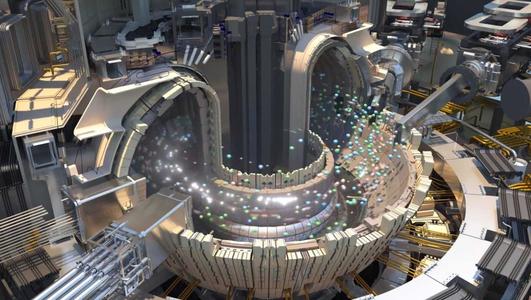The Use of Zirconium in Nuclear Reactors

Zirconium is a silver-gray transition metal. It is very malleable and has high ductile properties and forms stable compounds. Zirconium alloys have been applied and used in different sectors and in different ways. One of its main attractive properties is that it is resistant to corrosion.

It is used in an environment with high corrosive tendencies; Zirconium materials are used in pipes, heat exchangers, fittings, etc. Zirconium is also used in steel alloys, colored glazes, bricks, ceramics, abrasives, lamp filaments, artificial gemstones, etc. Zirconium also finds application in the making of catalytic converters, furnace bricks, lab crucibles, surgical instruments, television glass, etc.
In this article, we will discuss the application of Zirconium in Nuclear reactors. Zirconium alloys have excellent properties and are used as fuel cladding tubes and in other structural materials used to construct nuclear reactors.
Processing of Zirconium
Zirconium is usually present with other elements, especially its lower-row counterpart in Mendeleev's table: Hafnium. Most ores of Zirconium contain 1.5 - 2.5% Hafnium.
Hafnium has a high thermal neutron capture cross-section, so it needs to be removed from the Zirconium ore before being used for any nuclear applications. The processing of Zirconium alloy industrial components is rather complex because of its reactivity with oxygen.
Zirconium Alloy
The composition of nuclear-grade zirconium alloy comprises 95% Zirconium, and less than 2% is made of tin, iron, chromium, nickel, and other metals. These metals are added to improve the corrosion resistance of the alloy and improve its mechanical strength.
Use of Zirconium Alloys as cladding materials
Zirconium is used as a cladding material in nuclear reactors. It provides cover for the cylindrical fuel rods used to power nuclear reactors. Usually, the Zirconium cladding is packed with uranium oxide pellets or any other fissionable material. Fuel cladding refers to the outer part of fuel rods. It is usually between the reactor coolant and the nuclear fuel. Zirconium is a top-choice metal for most nuclear reactors due to its ability to easily absorb a few of the electrons that tend to escape during a fission reaction. It is also used due to its high resistance to chemicals and heat corrosion. Zirconium has a very low absorption cross-section for thermal neutrons.
Zirconium alloy is used for cladding due to its properties. It prevents radioactive fission products from leaving the fuel matrix and escaping into the reactor coolant and contaminating it. Because of its cooling ability, Zirconium is used as a good metal for cladding.
Nuclear reactors need to be built with materials with low neutron absorption. This is because large numbers of neutrons produced by the reaction must be free to easily interact simultaneously with all the nuclear fuel confined inside hundreds of fuel rods. This ensures that the necessary chain reaction is sustained inside the reactor's core.
Zirconium cladding, which is an alloy of zirconium with other metals, such as tin, iron, nickel, and chromium, is used in the fuel rods of nuclear electric generating plants and also in military reactors.
Use of Zirconium Alloys in water-cooled Reactors
The highest temperature at which Zirconium alloys remain effective in water-cooled reactors is determined by their corrosion resistance. Zirconium alloys like zircaloy, which contains tin as the main alloying element, have high mechanical properties due to the presence of tin. Zircaloy is mostly used in nuclear reactors in different parts of the world.
Oxidation of Zirconium Alloys
Nuclear industries have studied the process of the oxidation of Zirconium alloys and the reaction of Zirconium with fuel and steam in the case of nuclear accidents. Different reports have been done regarding the oxidation of Zirconium alloys at temperatures ranging from 800k and below. Water combined with Zirconium at a temperature of 300°C oxidizes the metal to form a solid oxide on the metal's surface. The rate of oxidation depends on the oxygen pressure or water vapor.
Importance of Using Zirconium as Cladding
One of the main applications of Zirconium is the cladding in nuclear reactors. Zirconium as cladding material prevents the escape of radioactive fission products from the fuel matrix into the reactor coolant, causing contamination. The absence of cladding may cause fuel rods to leak. This would lead to: ● Movement of stable and radioactive fission products such as xenon, iodine, or krypton into the primary circuit. ● Can cause long-lived isotopes like cesium, strontium, and technetium to be deposited on the primary circuit. ● Increases the overall level of irradiation of the circuit.
Generally, Zirconium alloys would remain relevant in the nuclear market since they help to improve fuel performance by allowing higher fuel burnups and lower failure rates. Zirconium alloys would remain the top choice for cladding fuel rods in water and nuclear reactors. This is because of its high resistance to corrosion and low capture cross-section for thermal neutrons.
{{item.content}}
LEVE A REPLY
{{item.children[0].content}}
{{item.content}}






